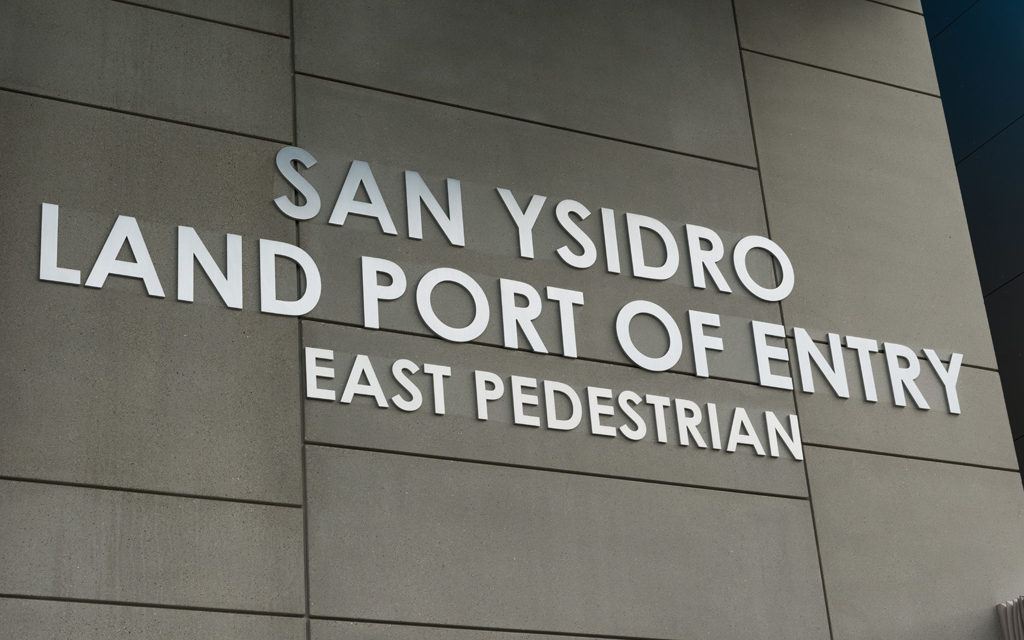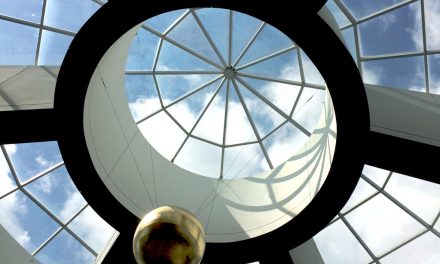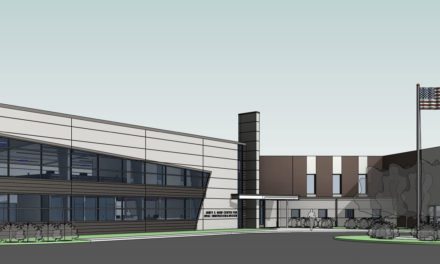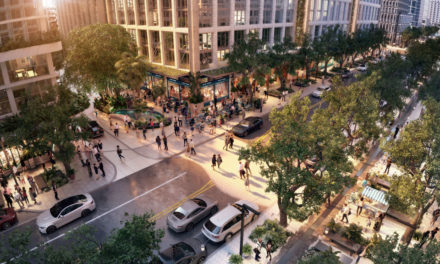Southern California’s San Ysidro Land Port of Entry (LPOE)—the busiest international border crossing in the western hemisphere, with 70,000 northbound vehicle passengers and 20,000 northbound pedestrians crossing daily—officially opened on August 15, marked by a ribbon-cutting ceremony hosted by the U.S. General Services Administration (GSA). The Main Pedestrian Processing Building is part of the $741 million, three-phase expansion project to accommodate growing cross-border traffic and reduce congestion. The San Ysidro LPOE expansion project is directed by GSA with U.S. Customs and Border Protection (CBP) as the primary tenant.
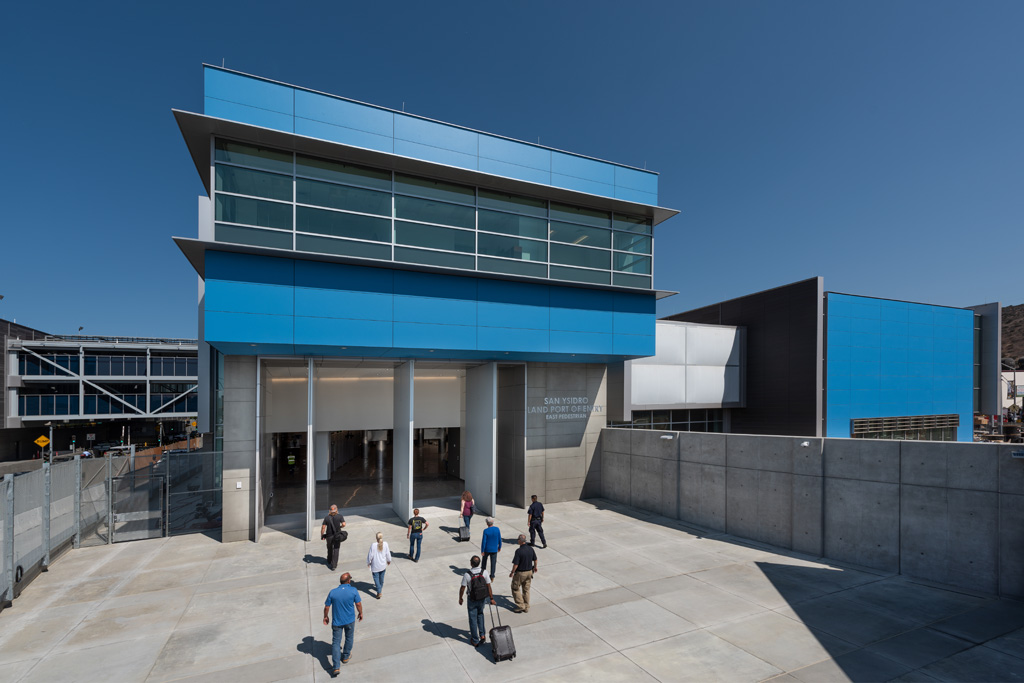
During the Phase 2 expansion project, the design-build team of Hensel Phelps and Stantec delivered a complete reconstruction of the port’s pedestrian and bus-inspection facilities, which included inspection booths for 18 northbound pedestrian processing lanes and four northbound bus-processing lanes. Designed to LEED Platinum and stringent energy reduction targets, this transformational project enhances the ability of CBP and other federal agencies to conduct their respective missions. Key project components include:
- Northbound Pedestrian Processing Facility: This building provides state-of-the-art customs facilities and queuing functions for U.S.-bound travelers.
- Historic Customs House: A major historic building renovation of this circa 1932 National Register of Historic Places building includes a new second story addition on the north wing to facilitate processing for Mexico-bound travelers.
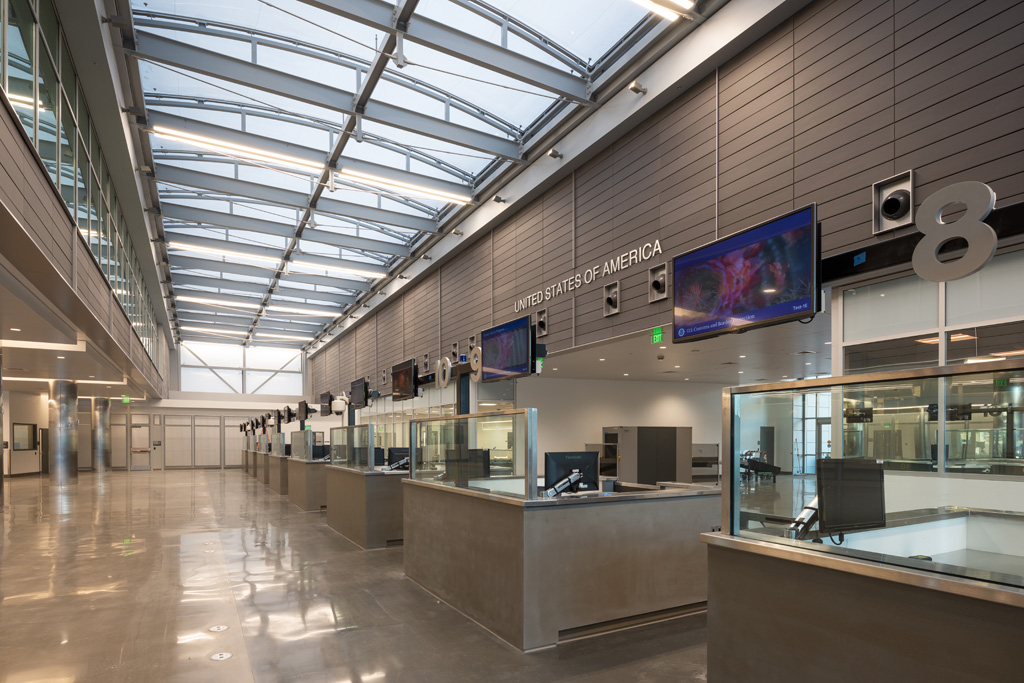
“San Ysidro is the largest and most complex port of entry in the western hemisphere,” said William Ward, CBP’s program manager. “One out of every five travelers who enters the U.S., whether by land, air or sea, does so through a port of entry within the San Diego Field Office jurisdiction, and the majority enters through San Ysidro. We couldn’t be more excited for the completion of Phase 2 and its expansion. The opening of the pedestrian-processing facility is a reflection of the hard work, collaboration and efficiency of the Hensel Phelps and Stantec design-build team.”
The latest project components support the port’s pedestrian-processing capacity, aided by the completion of the Virginia Avenue Transit Center (VATC) that was completed by the Hensel Phelps/Stantec team in July 2016. Associated with GSA’s West Pedestrian project (PedWest), the VATC provides multi-modal transportation options for the daily influx of 20,000 pedestrian travelers. This new transit center was designed, permitted and constructed in just nine months.
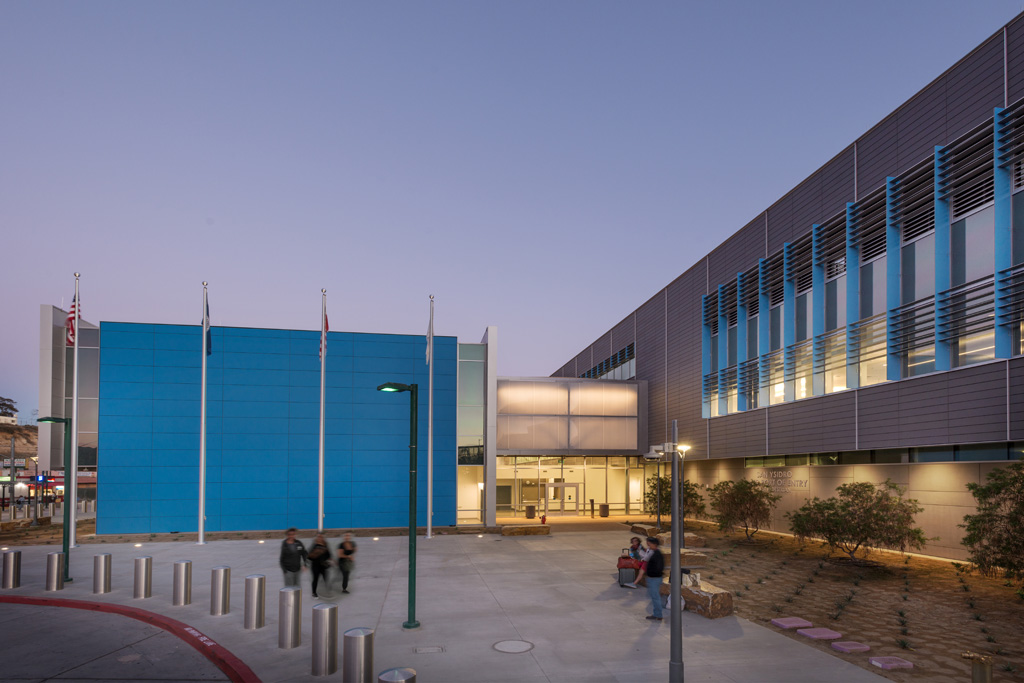
“We’re thrilled to play a part in helping improve the cross-border traveler experience,” said Bill Ferris, Stantec’s project director. “The opening of the Main Pedestrian Processing Building for operations represents a major step toward that goal and one that Stantec and our partners are humbled to be involved in.”
“This is an exciting and important milestone made possible by the hard work, dedication, and coordination of many. It has been a great experience to develop and deliver project solutions together with GSA, CBP, Stantec, and all of our trade partners that will greatly improve San Ysidro’s border efficiency as well as its security and public safety,” said Chris Chacon, Hensel Phelps’ director of operations. “The San Ysidro LPOE Phase 2 project is a state-of-the-art and sustainable gateway that will join together and serve the bi-national community for years to come, and we are proud to be a part of it.”

“We are excited for this milestone in the San Ysidro LPOE expansion project,” said Arun Kaiwar, Stantec’s design leader. “This is a special project with a tangible goal of uniting both sides of the border as one community. We’re passionate about working on projects which advance the quality of life in communities across the globe, and this project is the perfect embodiment of that principle.”
Stantec provided architecture, programming, interior design, civil engineering, electrical engineering, energy and daylight modeling, geomatics, information and communications technology, acoustics, lighting design, landscape architecture, physical and electronic security, and transportation services. Stantec’s Sacramento office led the project design in collaboration with global expertise from other Stantec offices including Phoenix and Tucson, Ariz.; San Diego, Van Nuys, San Francisco, Walnut Creek, and Irvine, Calif.; Lynnwood, Wash.; Charlotte, N.C.; and Longueil, Quebec.

